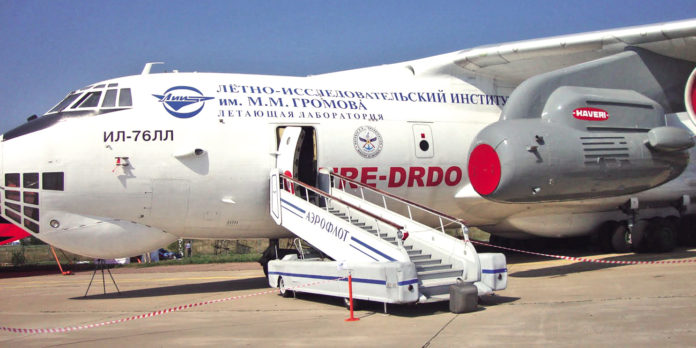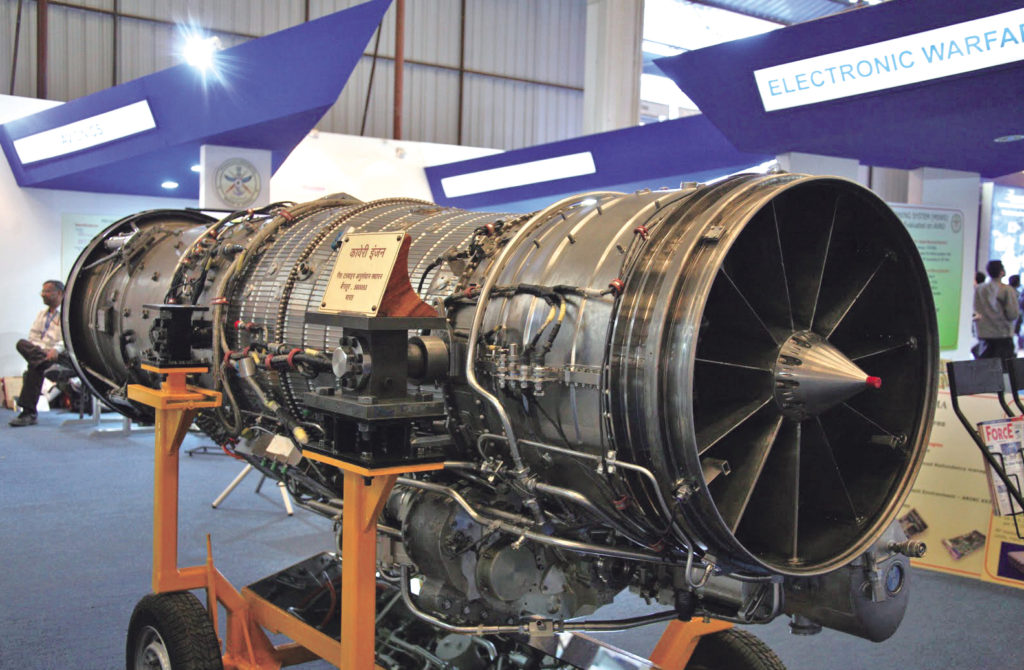Indigenous development of Kaveri Engine to power the Light Combat Aircraft (LCA) Tejas aircraft was sanctioned on 30 March 1989 at a cost of Rs.382.81 crore with 31 December 1996 as the planned date of completed (PDC).
In 2004, the cost of the project was revised to Rs.2839.00 crore with PDC of December 2009. Almost Rs 2100 crore have been spent so far.
The Comptroller and Auditor General (CAG) in its 2010-11 report said that Rs 1,892 crores had been spent over two decades on the project, but the country ended up buying General Electric (GE) engines at a cost of Rs 883 crore to power the LCAs.
The project had overshot its budget by 642 per cent without any perceptible results. The project underwent five revisions of cost, and saw a 1,013 per cent rise in its foreign exchange element since inception.
The CAG report had criticised Gas Turbine Research Establishment (GTRE) for having finally opted for a joint venture (JV) with a foreign partner, when the purpose of the Kaveri project was to indigenously develop a high performance jet engine for use on fighters.
Kaveri engine (K-9) was flight tested for the first time on November 3, 2010 by DRDO during the Flying Test Bed (FTB) trials (on board IL-76 aircraft) at Gromov Flight Research Institute (GFRI), Moscow, Russia.
The engine remains under development but has been dropped as a prospective power plant for the LCA. It is now a technology demonstrator engine for the LCA. A dry thrust only variant of the Kaveri maybe used to power the Indian Unmanned Combat Aerial Vehicle (UCAV). Also, more into the future, the Kaveri could be developed as the K-10 with the help of a foreign collaborator to power the Advanced Medium Combat Aircraft (AMCA).
Reasons for Non-completion
The following are some of the major reasons for non-completion of project within the time-schedule (as stated by defence minister Manohar Parrikar in Parliament on 30 July 2015):
• Technological difficulties faced during development due to complexities of engine system.
• Non-availability of raw materials/ critical components.
• Lack of infrastructure/ manufacturing/ test facilities within the country.
• Non-availability of skilled/ technical manpower in the field of aero-engine technology.
• Increase in scope during development.
Core Technologies
DRDO has not been successful so far in developing the nickel and cobalt super alloys for the Kaveri turbine capable of withstanding temperatures of 1,600oC without warping.
Shaping the alloys into engine parts is an equal challenge. GTRE has learned how to make “directionally solidified” turbine blades, but it has not mastered the making of “single-crystal blades,” which are now standard.
Milestones Achieved
Although there has been delay in development of aero-engine due to reasons stated above, DRDO for the first time ventured to initiate development of aero-engine technology, which only few developed countries in the world possess. The following are some of the major milestones achieved in this programme:
• Successful completion of 73 hours high altitude testing and 57 hours trial on FTB have proved level of technological capability and maturity.
• Full Authority Digital Engine Control (FADEC) System has been designed, developed and qualified indigenously.
• Twelve materials have been indigenously developed and type certified.
• Total of 9 Kaveri prototypes and 4 Kaveri core engine prototypes have been developed and accumulated more than 2550 hours of engine testing.
• Kaveri engine was integrated with IL-a6 Aircraft and flight-tested.
• Tacit knowledge acquired by the scientists are being applied in aerospace technology and other disciplines.
Indian Eco-system
The Indian aircraft industry is dominated by one big public sector player – Hindustan Aeronautics Ltd (HAL). It is supported by DRDO’s several establishments and laboratories, notably GTRE and Aircraft Development Authority (ADA) as well as National Aeronautics Laboratory (NAL).
HAL’s engine division has a long history of licenced-production of various imported designs. HAL has been making aero engines under licence from Russia for its MiG-21 and Sukhoi-30 fighters, with Britain’s Rolls Royce for Jaguars and advanced jet trainer (AJT) Hawk and Shakti aero engines for its advanced light helicopter (ALH) Dhruv.
Assembling and overhauling are not the same thing as designing and developing aeroengines. It has not taken up jet engines for fighters so far. HAL has taken up the design and development of the following aero engines:
• 25 kN Turbofan Engine. The design and development of 25 kN Turbo fan Engine are expected to meet the requirement of engines for basic/ advanced military trainers, small business jets and also for large UAV applications. Core-2 engine run was successfully carried out in January 2018. Development effort of this engine will enable the country to achieve self-reliance in design of this class of engines and technologies thus mastered would be further leveraged to design and develop higher thrust engines for modern fighter aircraft.
• 1200 KW Turboshaft Engine. HAL has also taken up the design and development of 1200KW Turboshaft engine which would be used as power plant for three to six-ton category helicopters. HTSE-1200 engine technology demonstrator is assembled and inaugural test run successfully carried out on February 12, 2018. Maximum speed archived so far is 76% of the RPM. Engine light up under hot and cold conditions was successful.
Until 1991, private companies were not permitted to operate in the aircraft industry. HAL has grown but being government-owned and run, it has suffered from the ills of bureaucracy and reliance on government funds and orders.
Comments
GTRE took over three decades to design and develop the Kaveri aero engine for the indigenous Light Combat Aircraft (LCA) Tejas, but it could not be used for want of the required thrust and overweight. As the tests failed to meet the required parameters to fit into the LCA, General Electric (F404-GE) engines are used for the Tejas fleet.
It can be said that the IAF put the cart before the horse, in that, the LCA design and development started without a proven engine around which to develop the aircraft. On the other hand, GTRE took a bigger bite than it could chew, without the infrastructure and testing facilities, technology or skills and with very little funds to make an ambitious jet turbine engine, which is more complex than rocket engines. Meanwhile, over years of delay, the requirements of the IAF went up to 70-75 kN or dry thrust and 100-110 kN of wet thrust.
Considering the fleet replacement programmes, modernisation strategies and aircraft upgrade projects of the Indian Air Force coupled with increasing defence expenditure, the Indian military aircraft engines market is poised to grow year-on-year. Some of the major engine procurement programmes in the near future will be for the Avro, An-32, LCA Tejas, AMCA and these entail procurement of around 3400 to 4000 engines.
The Indian Armed Forces have embarked on the largest helicopter procurement programmes and their requirements aim at strengthening the military helicopter assets through the procurement of 1000 plus rotary-wing platforms including attack, utility, multi-role and airlift platforms by the end of 2027. Projections are that the country would need 4000 to 6000 helicopter engines by 2020.
===============
Partnership with SNECMA
Even before the engine was flight-bed tested in 2010, DRDO offered to co-develop and co-produce 90 kN thrust class of upgraded Kaveri engine with Snecma, France to meet the operational requirement of Light Combat Aircraft (LCA), Tejas with 48 months from the date of project inception. The modified Kaveri engine proposal provided comparable thrust throughout the flight envelope of Tejas. Minimum changes were required in the airframe to integrate this engine without affecting the weight and configuration of Tejas. Indian Air Force. Indian Air Force has suggested a proven engine that was already in production and flight worthy for meeting immediate requirement. A Request for Proposal (RFP) has been issued to reputed engine manufacturers.
Snecma had developed the M88ECO a development of the M88-2 engine which powers the French Rafale. The M88-2 has a thrust of 50 to 75 kN and full authority digital engine control (FADEC) for carefree handling anywhere in its operating envelope.
Defence minister AK Antony, confirmed in Parliament on 22 November 2011 that DRDO “is negotiating with Snecma, France for co-development and co-production of Kaveri Aero Engine for the Light Combat Aircraft (LCA) Tejas Mk-II.” But on 4 January 2013, it was reported that the MoD had decided to float tenders to identify a foreign collaborator for improving thrust of the Kaveri engine since Snecma was a single-vendor case and it wanted to select a partner through competitive bidding.
Ironically GTRE sought a technology partner to develop a more powerful Kaveri engine “quickly and to become self-reliant in engine design to avoid the next cycle of engine development which could take another 15-20 years.” But the opposite of that happened.
The process for selecting a partner willing to share core technologies is still under way.
==============
The HF24 Story and the Missed Opportunity
In 1956 India decided to design and develop a supersonic fighter, the HF-24 Marut. It was agreed with Egypt that India would develop the air frame and Egypt would jointly develop the jet engine with India. The IAF wanted it to be a twin-engine supersonic fighter with Mach 2.0 speed.
World over aircraft were designed around a proven engine. The user would first decide on the class of the fighter, say 10 or 15 tons and select a suitable, tested and reliable engine with the required thrust and then design the airframe around it with weight to spare and space to cater for later developments. Our designers placed the cart before the horse – they went about designing the plane with no suitable engine in mind.
In the 1960s, the very successful ‘Sabre killer’ Gnat was inducted into the IAF. It was powered by a Rolls Royce Orpheus 703 engine with dry thrust of 20.9 kN. Rolls Royce was also developing an improved version of the engine that would provide a thrust of 35.6 kN to power the improved Gnat for the RAF. When the RAF decided not to go for the improved Gnat, the Rolls Royce project was also in limbo. Rolls Royce offered to jointly develop it with India for the HF-24 for a reported cost of $3 mn. This option was rejected. Meanwhile, the Eqyptian effort to produce a suitable engine for the HF-24 Marut failed. India looked at the Russian Tumansky engine, which was suitable, but rejected it on flimsy grounds.
With no other choice, the HF-24 Marut got the Orpheus 703, which was being assembled in India for the Gnat. It was the death knell of the HF-24 Marut. It remained underpowered and was phased out after by 1990, all because of lack of synergy and understanding between the military, bureaucracy, politicians and scientists.




















[…] ALSO READ: What is the Status of Kaveri Aero Engine? […]